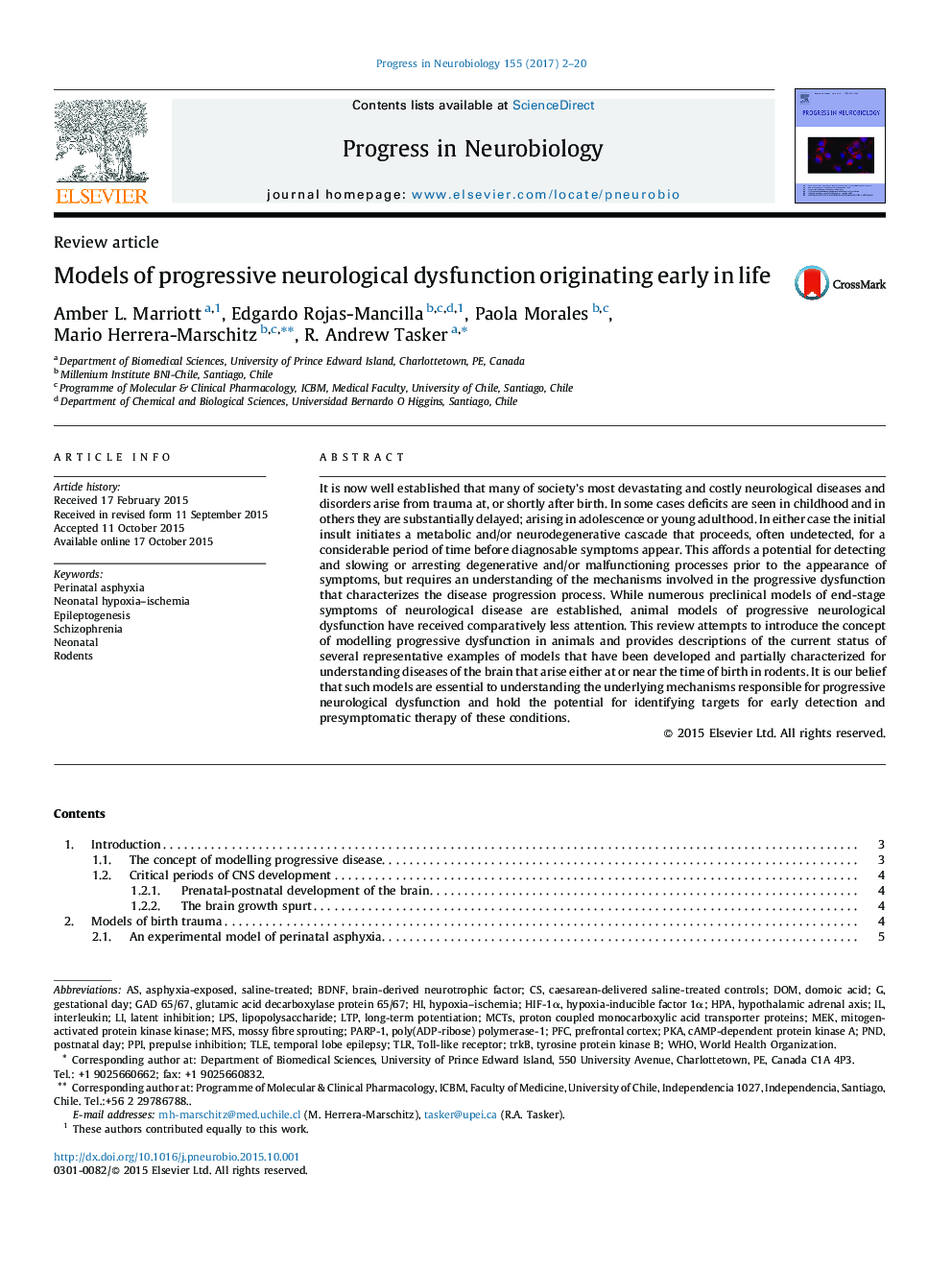| Article ID | Journal | Published Year | Pages | File Type |
|---|---|---|---|---|
| 5739159 | Progress in Neurobiology | 2017 | 19 Pages |
â¢Many important neurological diseases and disorders originate at or around the time of birth.â¢Animal models of progressive neurological dysfunction are needed to understand delayed onset disease.â¢Examples described include models of perinatal asphyxia, hypoxia, epileptogenesis and schizophrenia.â¢Novel perspectives on presymptomatic intervention and models of co-morbidity are described.
It is now well established that many of society's most devastating and costly neurological diseases and disorders arise from trauma at, or shortly after birth. In some cases deficits are seen in childhood and in others they are substantially delayed; arising in adolescence or young adulthood. In either case the initial insult initiates a metabolic and/or neurodegenerative cascade that proceeds, often undetected, for a considerable period of time before diagnosable symptoms appear. This affords a potential for detecting and slowing or arresting degenerative and/or malfunctioning processes prior to the appearance of symptoms, but requires an understanding of the mechanisms involved in the progressive dysfunction that characterizes the disease progression process. While numerous preclinical models of end-stage symptoms of neurological disease are established, animal models of progressive neurological dysfunction have received comparatively less attention. This review attempts to introduce the concept of modelling progressive dysfunction in animals and provides descriptions of the current status of several representative examples of models that have been developed and partially characterized for understanding diseases of the brain that arise either at or near the time of birth in rodents. It is our belief that such models are essential to understanding the underlying mechanisms responsible for progressive neurological dysfunction and hold the potential for identifying targets for early detection and presymptomatic therapy of these conditions.
Graphical abstractDownload high-res image (160KB)Download full-size image
